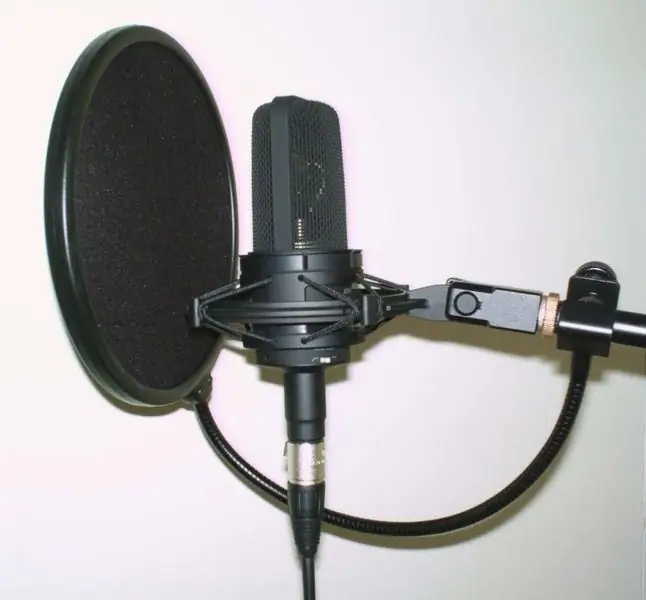In the past, in order to record your own voice and hear it from the outside, you had to use a tape recorder. Today it will be successfully replaced by a computer. It will allow not only to carry out the recording itself, but also to edit it in the desired way.

Instructions
Step 1
When preparing your computer for use as a home recording studio, start by choosing a microphone. It must be electret. Dynamic will not work - your voice will be barely audible. Choose a microphone that is comfortable for you to hold in your hands, and if you want your hands to be free while singing and you can play a musical instrument, buy a lapel microphone (without a radio channel) or headphones with a microphone. If you wish, you can convert a dynamic karaoke microphone into an electret microphone designed for connection to a computer. With it, you will look like a real pop performer.
Step 2
Locate the microphone input on your computer sound card. Typically, the nest intended for this is reddish-pink. Connect a microphone to it. Do not plug the microphone into any other jack by mistake - the design of the plug is such that it will short-circuit one of the stereo channels, which could damage the amplifier on the sound card.
Step 3
Say something into the microphone. Most likely, you will not hear any sound from the speakers. The fact is that on many computers the microphone input is disabled by default. Start the mixer program (it is available in both Linux and Windows, but has different names), turn on the microphone input and adjust its sensitivity. When you hear a squeak of acoustic feedback, turn down the volume on the speakers, move the microphone away from them, or plug in headphones instead.
Step 4
The computer hardware is ready to record vocals, so it's time to take care of the software as well. Install Audacity on your machine. In terms of control, it is very similar to a tape recorder. Once started, press the circular (REC) key, sing a song into the microphone, stop recording with the square (STOP) key, then listen to it again by pressing the PLAY triangle key. Using the menu, you can save the file in the AUP format or export to the usual MP3. In the future, as you acquire skills in working with the program, you will learn how to edit records and apply various effects to them.






